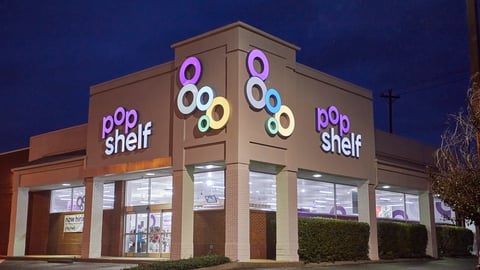New world, new rules: The supplier orchestration imperative
There will always be a before and after the pandemic when it comes to supply chains.
Whether we consider the intensity, the speed, or the breadth of the disruption, the discipline has been transformed dramatically, and there is no going back. Today, the most critical point for retail companies is understanding what has changed and how to execute in the next normal.
It’s a new game.
From specialized functions to orchestrated networks
Traditionally, supply chains were set up as multiple spread out and specialized functions (demand, supply, production, merchandising, sourcing, etc.), leading companies to focus on transactional interaction within their networks, with a primary goal of maintaining low production costs.
It all changed the moment the pandemic hit. It all became about orchestration. Supply chains could no longer operate in silos, and the intricate relationships between each instrument in the global ensemble were exacerbated. In the next normal, orchestration will remain.
Dynamic supply chains: From optimized to synchronized
The term supply chain was very commonly used in the footwear and apparel industry, but they were not genuine supply chains. Supply chains need connection, but there was a handoff. Supply chains were managed in silos as a sequence of several batch processes. The next normal is agile, versatile; it operates dynamically by taking all variables into consideration. The focus is no longer on optimization but on the synchronization of each resource.
With these new rules, retailers need to change their strategies to win. To lead, the focus needs to be on supplier orchestration, and here is why.
First, companies need to take a hard look at the whole business process—from raw materials to finished goods, through distribution and transportation. Gaining end-to-end visibility is critical for companies to understand the constraints and risks at each stage of the process, to anticipate disruptions, and mitigate risks. Investing in a digital twin (i.e., a virtual replica of every entity, resource, and interaction that makes up a company's supply network beyond its four walls) is the best way to break the silos and initiate collaboration.
Enhanced with suppliers' data, digital twins can support scenario analysis allowing retailers to
improve their planning and decision-making process. By getting tier-1 and tier-2 suppliers’
capacities and constraints, retailers are able to balance the aggregate demand with the
available capacity provided, establishing feasible rough-cut capacity plans from the first
iteration.
The second aspect of proper orchestration is the ability to decouple the decisions along the product lifecycle. To improve the process and reduce lead times, retailers can forecast raw materials used for multiple finished goods at an aggregated level. From there, they purchase the
raw materials from the tier-2 supplier, then allocate and deliver them to the tier-1 manufacturer.
When retailers place the purchase order to their contract manufacturers after forecasting the demand at the style and size level, they know the raw material is already available. This change
in the process reduces the lead time and gives retailers control over the delivery dates and costs.
For instance, a jeans retailer can buy the fabric used for multiple styles or nickel used for the buttons without knowing the specific demand for each bottoms design or size. As the lag between the finished good order and the raw material purchase is eliminated, the overall lead time for production is reduced. This compression of the delays allows retailers to postpone decisions, therefore being more accurate (size curves, trends, etc.)
By owning the raw materials and getting visibility in the stocks, retailers can reverse the engineering process and inform the design based on the on-hand raw materials. If they have an overstock in a specific sundry or fabric, they collaborate with the merchandising teams, asking
them to design a style that would incorporate these elements.
In addition to capacities and demand, tracking the movement of materials, components, and finished goods through the network by ingesting real-time data from various sources, such as
IoT, warehouse management systems, procurement, or even GPS, allows retailers and their suppliers to anticipate risks (fabric not delivered, product quality assessment failed, the truck is late, etc.)
All parties can collaborate, simulate scenarios to understand the impact and trade-offs of each solution, and make educated decisions to re-allocate an order and prioritize a program. By re-integrating data into the execution process, companies are able to sense demand and supply better, making them flexible and agile, therefore, resilient to change.
The benefits of solid supplier orchestration reside in reducing lead times or waste and increasing OTIF and revenue. By making companies more agile and flexible, inventory obsolescence, waste, and carbon emissions are also impacted for the greater good.
Vishal Mankotia is VP, global supply management at Levi Strauss & Co. Vikram Murthi is VP industry strategy at supply chain software company o9 Solutions.










